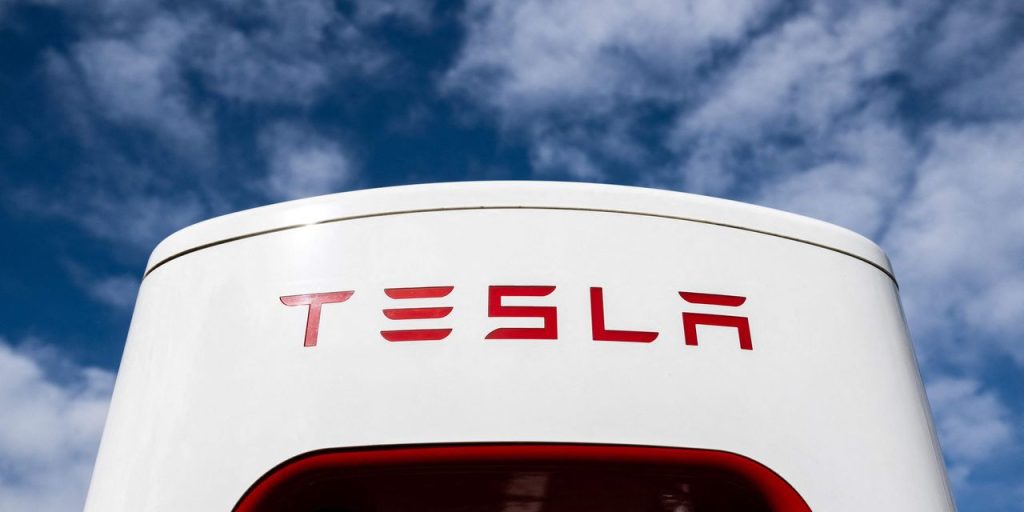Price wars have consequences, even for Tesla, the world’s most valuable car company.
Tesla‘s (ticker: TSLA) first-quarter earnings, reported Wednesday evening, met expectations, but its first-quarter automotive gross profit margins were bad. No matter how investors slice and dice the numbers, results will leave them with questions about EV demand and Tesla’s pricing strategy.
Automotive gross profit margins, excluding regulatory credits, came in below 16%, down from about 21% in the fourth quarter of 2022. It is the first time that number has been below 20% since the second quarter of 2020.
Including leases, the auto business generated gross profit margins of about 19%, below Wall Street expectations of 21% and below the 20% investors were looking for a minimum level.
Some analysts model margins excluding credits and leasing, making it difficult to pin down exactly how large the miss was. Bottom line for investors: Below 20% wasn’t what they wanted to see.
Pricing is the big reason for the margin decline. A proxy for the average price per vehicle sold, calculated by taking automotive sales plus lease revenue and dividing it by deliveries, was about $47,200, down from about $54,400 in the first quarter of 2022.
And gross profit margin per vehicle sold including leasing was about $8,600. A year ago, that number was about $15,700.
It isn’t a strong showing for the EV maker. Jesse Cohen, analyst at Investing.com, called results underwhelming. “Coming out of Q1 earnings, we have decreased conviction in Tesla’s ability to accelerate revenue growth and expand operating margin,” he said.
Tesla stock was down 4% in after-hours trading Wednesday, after having already dropped 2% during the regular session. The Nasdaq Composite and
S&P 500
finished roughly flat.
The rest of the quarter looked OK. Tesla reported a profit of 85 cents a share, meeting expectations, on sales of $23.33 billion, just a touch below forecasts for $23.67 billion.
Tesla’s other business did just fine, generating a record $303 million in gross profit. Tesla deployed 3.9 gigawatt hours of battery storage in the quarter, up about 300% year over year.
Total operating profit reported came in at $2.7 billion, below Wall Street’s expectations for $3 billion. Operating profit margins came in at 11.4%, down from 19.2% in the year-ago quarter. Excluding stock based compensation, operating profit margins came in at about 13.2%. RBC analyst Tom Narayan was looking for margins excluding stock based comp to come in at about 15.3%.
But stock based compensation is still an expense and operating profit margins of 11% make Tesla look like a traditional auto maker.
Toyota Motor
‘s (TM) fourth-quarter operating profit margin came in at almost 10%.
“In the current macroeconomic environment, we see this year as a unique opportunity for Tesla,” reads the quarterly report. “As many carmakers are working through challenges with the unit economics of their EV programs, we aim to leverage our position as a cost leader.”
Tesla appears to be stepping on the throats of the competition and is willing to use vehicle prices to do it. The problem for Tesla is that General Motors (GM) and Ford Motor (F) are still making a lot of money in their traditional car business. Losses in those companies’ EV businesses don’t really register yet, meaning Tesla might be leveraging its cost position early.
CEO Elon Musk talked about pricing on the company’s earnings conference call Wednesday evening. He said he didn’t want to kill off any EV competition, adding he is opening up the Tesla supercharging network to other EVs.
Overall, Musk didn’t sound too worried about one quarter’s margins. He was focused more on vehicle autonomy and wants to put the most cars into the market as he can as soon as he can. With more Tesla vehicles on the road, Tesla can generate more profit selling autonomous driving software to all of them. That is the plan anyway.
Fully autonomous driving is still out in the future. In the near term, Musk added that rising interest rates are a factor in vehicle affordability that Tesla takes account of.
CFO Zachary Kirkhorn, on the company’s fourth-quarter call in January, said that Tesla could hit automotive gross profit margins of 20% for the full year. He didn’t back off that level explicitly Wednesday and talked about cost reductions still to be realized by better utilizing Tesla’s new factories. He did add that recent price cuts “lowers the floor” for automotive gross profit margins, excluding regulatory credits.
Investors are also interested in demand trends. Musk said orders still exceed supply.
“From a production standpoint we’ve got a shot at 2 million vehicles this year…we feel comfortable with 1.8 [million],” added Musk.
Wall Street expects about 1.8 million deliveries for 2023. Musk’s comments are one silver lining for investors.
Another silver lining is that costs are coming down. The average cost to produce a car came in at about $38,600, down from the second-quarter 2022 peak of about $42,700. The type of vehicle ordered impacts both price and cost calculations so investors should use the cost calculation as only a rough guide.
The nonautomotive business was another positive. Gross profit margins, excluding leasing, were about 8%, up about 10 percentage points year over year. Truist analyst William Stein pointed out that service revenue, at $1.8 billion, were at an all-time high.
Bulls will take some solace the positives. But, for now, Tesla is still mostly a car company. More than 90% of gross profit generated comes from selling cars and automotive leasing.
Write to Al Root at allen.root@dowjones.com and Callum Keown at callum.keown@barrons.com
Read the full article here




